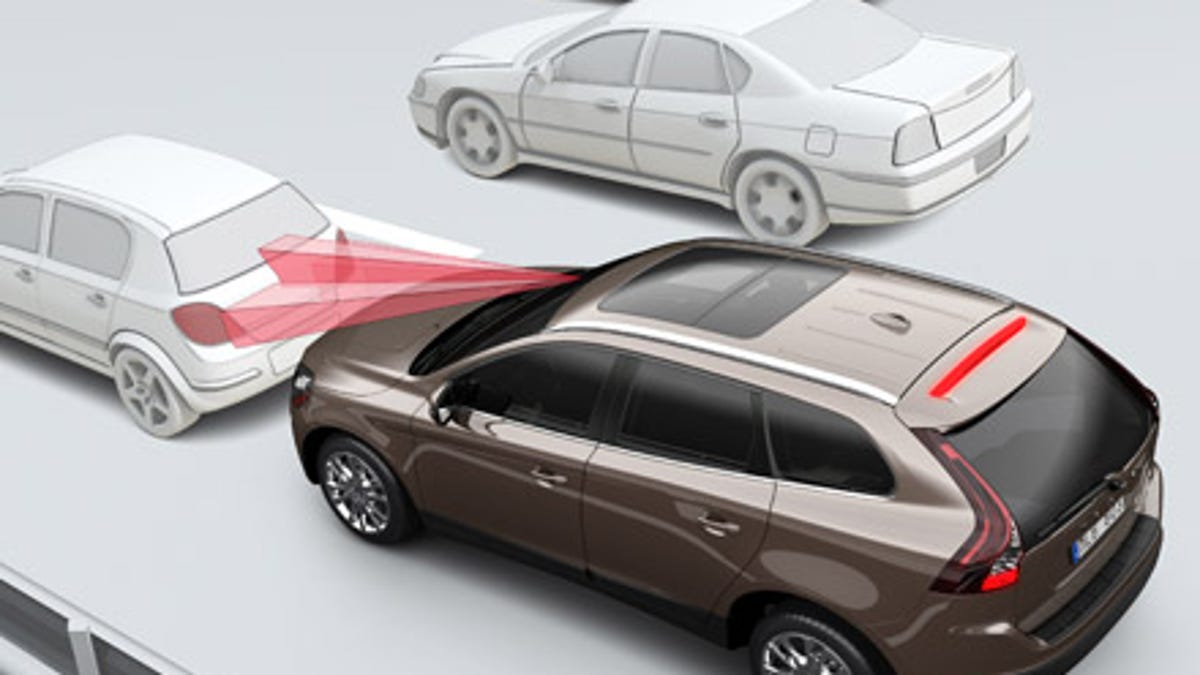Volvo's XC60 can avoid accidents in the city
A car that can brake itself to avoid a fender-bender during the morning commute might seem far into the future. Except that it goes on sale here in March. That's when City Safety, a low-speed collision-avoidance technology, becomes available on the new Volvo XC60, a so-called "soft-roader" four-wheel drive.

A car that can brake itself to avoid a fender-bender during the morning commute might seem far into the future. Except that it goes on sale here in March. That's when City Safety, a low-speed collision-avoidance technology, becomes available on the new Volvo XC60, a so-called "soft-roader" four-wheel drive.
A Volvo XC60 sensing an imminent collision
(Credit: Volvo)
Despite sexing up its design over the last decade, for many buyers the Volvo brand primarily stands for safety. Although the company projects a Nordic reserve, it's unabashed about the new XC60, which will go on sale here in March for a smidge under AU$58,000. "We probably created the safest car in the world," said Thomas Broberg, a senior engineer at the Volvo Cars Safety Centre in Gothenburg, Sweden. The automaker, which is owned by Ford, characterised City Safety as a world first.
Here's how it works: a windshield-mounted laser sends infrared rays out as far as eight metres ahead of the vehicle. A computer analyses the rays reflected back from any object ahead of the car, and if it concludes a collision is imminent, it automatically brakes the vehicle. According to Volvo, if the speed difference is less than 15km/h then the City Safety system can completely avoid a crash, otherwise it will minimise the severity of the collision.
The system is designed to prevent the low-speed collisions often seen during bumper-to-bumper conditions when a driver fails to notice that the car ahead has slowed down or stopped, Broberg said. According to Volvo, nearly 75 per cent of all collisions take place at speeds below 30km/h. To bolster its argument the company also cited an estimate from NRMA Insurance that "driver inattention [was] usually to blame" for the roughly 50,000 rear-end accidents that occur in NSW annually.
City Safety is standard on Australia-bound XC60 models. According to NRMA Insurance's research head, Robert McDonald, its inclusion means that the car's insurance premium "will up to 20 per cent cheaper than it would be if it didn't have the technology".
As new and as exciting as City Safety is, it is rather similar to another technology that has been on the market for several years — adaptive cruise control.
Cruise control didn't change much for decades after it was first introduced by Chrysler in 1958. You simply set your speed and the car maintained it. That changed a decade ago with the introduction of adaptive cruise control, something that Mercedes-Benz called Distronic. The Mercedes system relies on short and long-range radar sensor sweeps that look ahead up to 200 metres. It can keep a car a preset distance behind a car in front of it by adjusting the brake and throttle and reacting if a car suddenly pulls into your lane.

